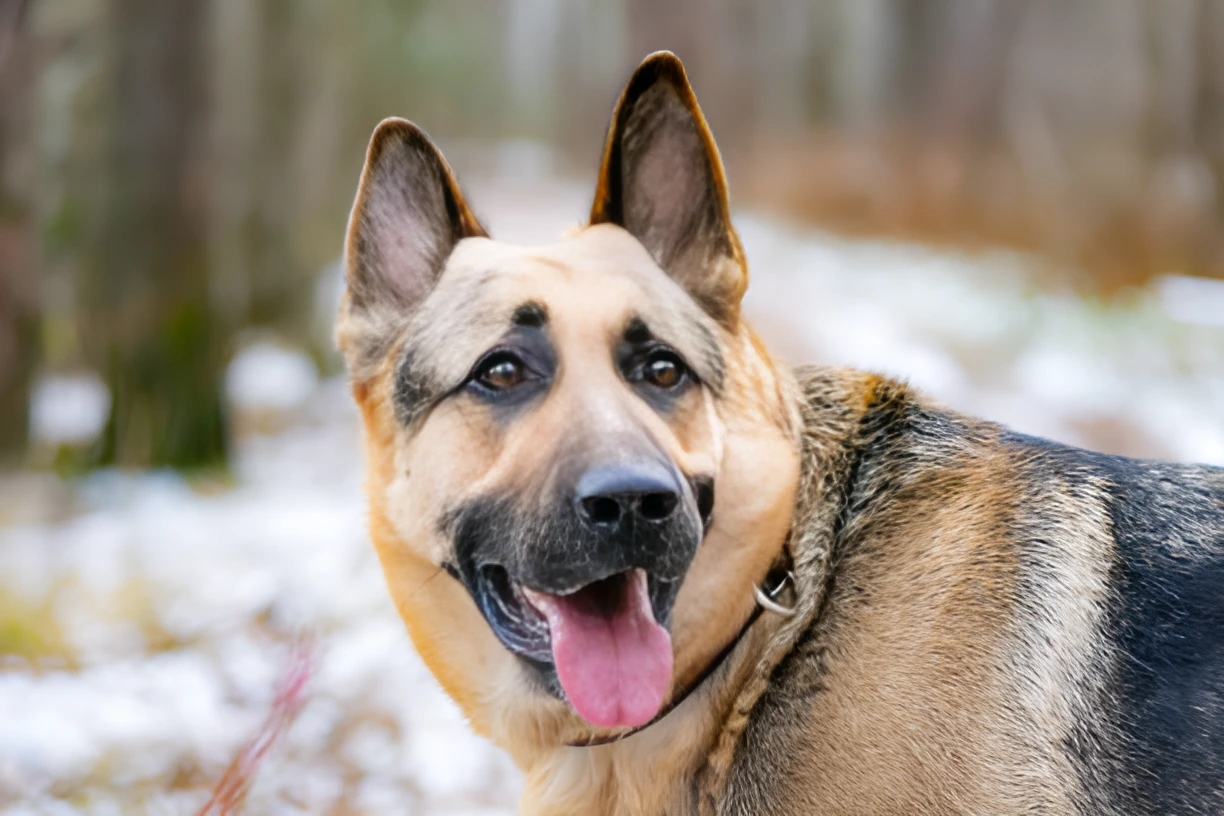Yes, East European Shepherds are relatively rare, especially outside of Russia and former Soviet countries. This article explores the history, characteristics, and current status of the East European Shepherd, providing a comprehensive overview of this unique breed.
The East European Shepherd, also known as the Vostochno Evropeiskaya Ovcharka (VEO), is a breed that stands out for its strength, intelligence, and loyalty. Developed in the Soviet Union, this breed was designed to withstand harsh climates and perform demanding tasks. Despite its impressive qualities, the East European Shepherd remains relatively rare, particularly in Western countries. This guide will delve into the breed’s history, characteristics, and why it is not as widespread as other shepherd breeds.
History of the East European Shepherd
1. Origins: The East European Shepherd was developed in the 1930s by the Soviet military, who sought a dog that could handle the harsh Russian climate and perform various working roles. The breed was created by crossing German Shepherds with hardy Russian breeds such as the Caucasian Shepherd and the Central Asian Shepherd.
2. World War II Impact: The development of the breed was interrupted by World War II but resumed afterward. The breed was officially recognized in 1964, and it quickly became the preferred dog for the KGB and other Soviet security forces.
3. Post-Soviet Era: After the dissolution of the Soviet Union, the breed remained popular in Russia and other former Soviet states but did not gain significant recognition or popularity in Western countries.
Characteristics of the East European Shepherd
1. Physical Attributes: East European Shepherds are larger and more robust than their German Shepherd counterparts. Males typically stand 26 to 28 inches tall and weigh between 90 to 145 pounds, while females are slightly smaller. They have a dense coat with a well-developed undercoat, which provides excellent protection against cold weather.
2. Temperament: Known for their loyalty and protective instincts, East European Shepherds are excellent guard dogs. They are intelligent, trainable, and have a calm demeanor, making them suitable for various roles, including police work, search and rescue, and as family pets.
3. Health and Lifespan: The breed is generally healthy, with a lifespan of 10 to 14 years. Common health issues include hip dysplasia and ear infections. Regular veterinary check-ups and a balanced diet are essential to maintain their health.
Why Are East European Shepherds Rare?
1. Geographical Concentration: The breed is primarily found in Russia and former Soviet countries. Limited exportation and breeding outside these regions contribute to their rarity in Western countries.
2. Lack of Recognition: Unlike the German Shepherd, which is recognized by major kennel clubs worldwide, the East European Shepherd has limited recognition. This lack of recognition affects its popularity and availability.
3. Breeding Challenges: Breeding East European Shepherds requires maintaining specific standards to preserve their unique characteristics. This can be challenging and limits the number of reputable breeders.
The Role of East European Shepherds Today
- Working Roles: In Russia and former Soviet states, East European Shepherds continue to serve in various working roles, including police and military work, search and rescue, and guarding livestock.
- Companion Animals: Despite their working background, East European Shepherds can make excellent family pets. They are loyal, protective, and good with children when properly socialized.
- Show Dogs: The breed is also gaining popularity in dog shows, where their impressive appearance and intelligence are showcased.
Training and Socialization
1. Early Socialization: Early socialization is crucial for East European Shepherds to ensure they are well-adjusted and can interact positively with other animals and people.
2. Training Techniques: Positive reinforcement techniques work best with this breed. They respond well to consistent, firm, and gentle training methods.
3. Exercise Needs: East European Shepherds are active dogs that require regular exercise to stay healthy and happy. Daily walks, playtime, and mental stimulation are essential.
Conclusion
East European Shepherds are a remarkable breed with a rich history and impressive characteristics. While they are relatively rare, especially outside of Russia and former Soviet countries, their loyalty, intelligence, and versatility make them a valuable breed. Whether serving in working roles or as family companions, East European Shepherds continue to demonstrate their exceptional qualities.
The photo featured below the post headline is Credit: ElenaBoronina/istockphoto
I hope you find this post helpful and informative. If Yes’ feel free to share it with your friends!
Frequently Asked Questions
Are East European Shepherds good family pets?
Yes, with proper training and socialization, East European Shepherds can make excellent family pets. They are loyal, protective, and good with children.
What are the common health issues in East European Shepherds?
Common health issues include hip dysplasia and ear infections. Regular veterinary check-ups and a balanced diet are essential to maintain their health.
How much exercise do East European Shepherds need?
East European Shepherds require regular exercise, including daily walks, playtime, and mental stimulation, to stay healthy and happy.
Why are East European Shepherds rare in Western countries?
The breed is primarily found in Russia and former Soviet countries, with limited exportation and breeding outside these regions. Lack of recognition by major kennel clubs also contributes to their rarity.
What roles do East European Shepherds serve in today?
East European Shepherds continue to serve in various working roles, including police and military work, search and rescue, and guarding livestock. They also make excellent family pets and show dogs.

